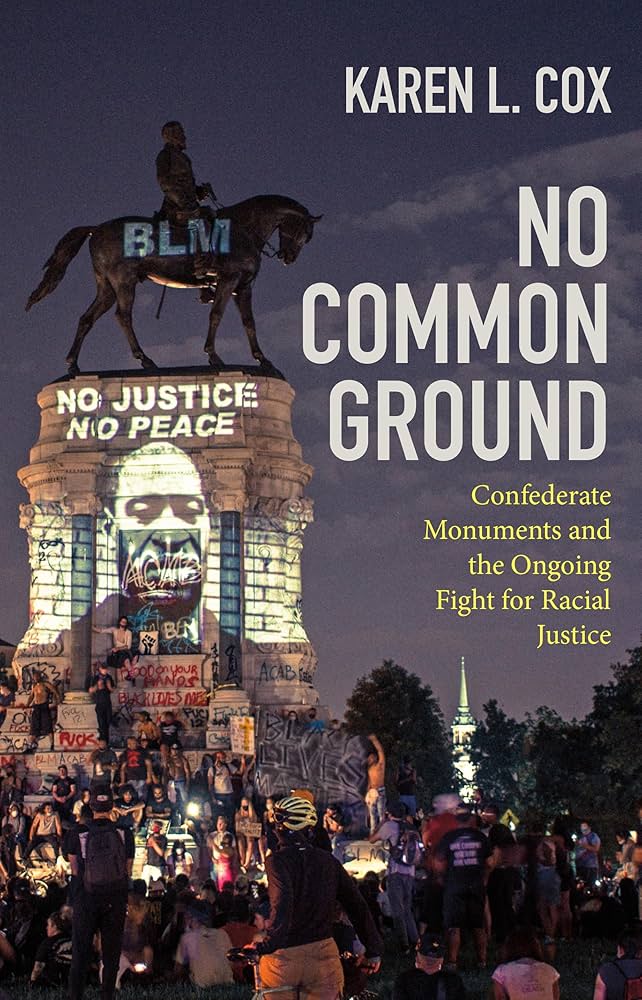To many Americans, the heated debates over Confederate monuments might seem new. But Karen L. Cox, a leading historian of Confederate memory, reminds us in No Common Ground, her brief, excellent overview of Confederate monument history, that these statues have been hotly contested since their inception. Through a swift survey of news reports, speeches, pamphlets, and legislative debates, she shows that in the minds of their Southern white creators and to Black communities, these monuments “have always been attached to the cause of slavery and white supremacy.”
It is hard, in fact, to ignore that Confederate monuments are part of a much larger culture of Confederate glorification. There’s little doubt why the monuments were erected; the question is why they have attracted more attention than other Confederate symbols and how we should deal with the myriad of forms of Confederate nostalgia—in films, books, plantation sites—that surround us.
Almost as soon as the Confederacy was defeated, Southern white elites began to craft an alternative history of the Civil War. In 1866, Edward A. Pollard, a journalist for the Richmond Examiner, wrote a 752-page revisionist history of the war titled The Lost Cause, which created the template for how many white Americans, and not only Southerners, would remember the conflict. In this telling, the South fought nobly in a war of Northern aggression. They were simply defending the constitutional principle of states’ rights—not slavery—and in so doing were upholding the constitutional principles of the Founding Fathers. Slavery became a nonissue in this telling, with the institution construed as “improving the African race humanly, socially, and religiously,” as Pollard wrote.
Though this Lost Cause mythology quickly captured the imaginations of many white Southerners—and continues to today—public monuments honoring Confederate leaders were rare before the 1890s. During Reconstruction, the 12-year period following the Civil War, the federal government oversaw the massive enfranchisement of Black male voters, and so long as Black officials were elected to office, public monuments honoring Confederate enslavers remained rare. But that changed dramatically after the overthrow of Reconstruction. Confederate veterans and their descendants began a massive campaign not only to disenfranchise Black voters and impose legal segregation but to reshape the Southern landscape in the Confederacy’s image.
